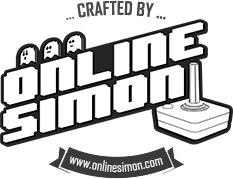Eric Chahi, a visionary French game designer, is best known for his groundbreaking work on Another World (also known as Out of This World in the US), a game that pushed the boundaries of pixel art and animation in the early 1990s. Born on October 21, 1967, Chahi began his career in the mid-1980s, when the video game industry was rapidly evolving, and pixel art was the primary medium for visual storytelling.
Chahi's early work involved creating games on platforms like the Amstrad CPC and Atari ST, where he honed his skills in grid-based pixel art. Unlike many of his contemporaries who focused on detailed sprite design, Chahi was drawn to the expressive potential of minimalism within the grid. He saw the pixel grid not just as a tool for constructing images, but as a means to evoke atmosphere, emotion, and narrative.
Another World (1991) is the culmination of Chahi’s innovative approach to grid-based pixel art. The game, which he developed almost entirely on his own, broke away from the standard conventions of pixel art at the time. Instead of relying on traditional sprites and static backgrounds, Chahi used the grid to create fluid, vector-like animations and dynamic environments that gave the game a cinematic quality. His use of rotoscoping—tracing over live-action footage—allowed him to craft lifelike movements within the constraints of pixel grids, giving the game a unique and immersive feel.
The backgrounds in Another World were composed of large, blocky pixels that formed abstract, minimalist landscapes. These environments, while simple in construction, were rich in mood and atmosphere, drawing players into a hauntingly alien world. Chahi’s innovative use of the grid allowed him to convey complex emotions and tension with minimal visual elements, demonstrating that pixel art could be as much about what is implied as what is shown.
Eric Chahi's work on Another World revolutionised the use of grids in pixel art, showing that even within the rigid structure of a grid, there was room for fluidity, expressiveness, and deep narrative immersion. His minimalist approach and innovative techniques have left a lasting impact on the gaming industry, influencing countless developers who continue to explore the creative possibilities of pixel art.
Related articles:
